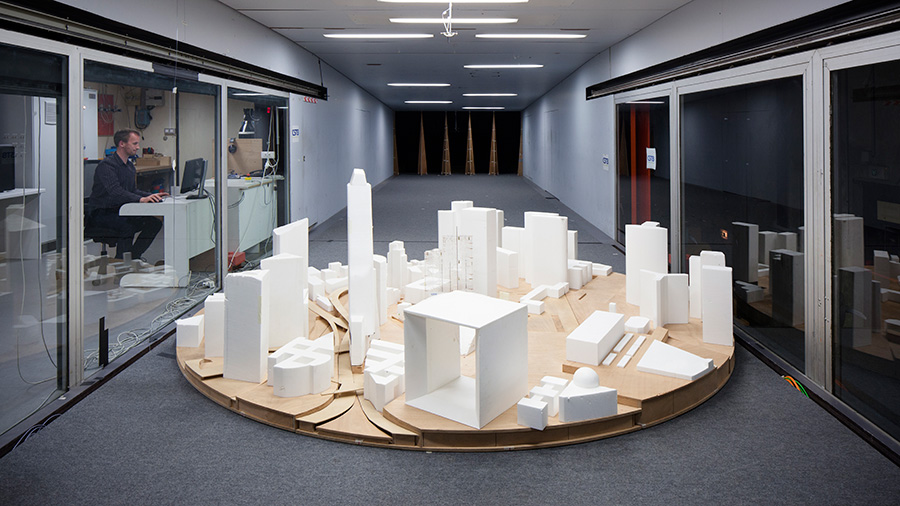Accurate wind loading for civil engineering works (bridges, towers, stadiums, buildings) is essential to their safety and durability. In the design phase, the CSTB guides professionals in analyzing the aerodynamic behavior of buildings to ensure their wind resistance and comfort in outdoor spaces. For this purpose, it has two atmospheric boundary layer wind tunnels in Nantes. They analyze wind-related phenomena using experimental methods on reduced-scale models.

Wind resistance and comfort
The two CSTB wind tunnels are particularly suited for analyzing wind loading and the aerodynamic behavior of major structures.
They help optimize wind comfort in major structures. This is crucial to providing comfortable spaces for pedestrians and users of the rooftop space on high-rise buildings.
Finally, atmospheric wind tunnels make it possible to analyze pollutant dispersion from localized sources, such as road tunnels in urban environments, hospitals and laboratories.
Physical simulation of wind effects
The two atmospheric boundary layer wind tunnels simulate wind speed change and turbulence based on altitude. Mean wind speed is lower and turbulence stronger near the ground because the wind interacts with obstacles (vegetation, buildings, infrastructure, etc.). The size of the vortices, representing the distribution of turbulent energy depending on frequency, is also accurately simulated.
The NSA wind tunnel is a modern closed circuit wind tunnel with a main test section 20 meters long and 4 meters wide, with adjustable height from 2 to 3 meters. Airflow rate can be set from 0 to 30 m/s, ± 0.1 m/s. The temperature is kept stable during tests. The NSA wind tunnel is used for analyzing major civil engineering structures (towers, stadiums, buildings) and bridges, typically at scales between 1:50 and 1:500.
The NASA wind tunnel has dimensions comparable to the NSA wind tunnel. Its speed is variable from 0 to 9 m/s. It is particularly well suited for analyzing the stability of tower cranes. Its porous walls permit work at scales on the order of 1:100, undisturbed by blockage effects.
Special measuring technology
To characterize the behavior of structures in the wind, the CSTB measures point effects on reduced-scale models using special measuring technology. It measures:
- Maximum forces exerted by the wind on a building;
- Instantaneous synchronous pressure fields exerted by the wind on a building;
- Displacement and acceleration of a structure caused by the wind.
Among its measurement instruments, the CSTB has a pressure scanner capable of acquiring more than 1 million bits of information per second (over 1,000 synchronous measurements per second at over 1,000 Hz). It is used to determine the local peak loads exerted on a large number of points on the facades of a building and calculate the overall peak forces by applying instantaneous synchronous local loads to the envelope.
Although physical simulation in a wind tunnel remains the standard for wind loading for structures, digital tools are increasingly used for wind comfort and pollutant dispersion studies, as well as preliminary wind loading studies, pending experimental validation.
